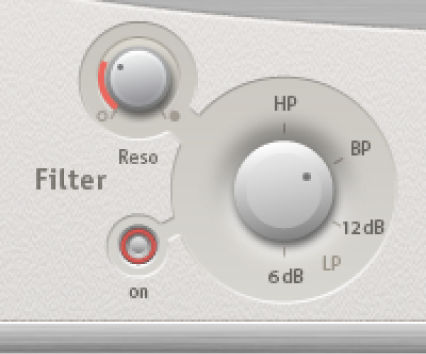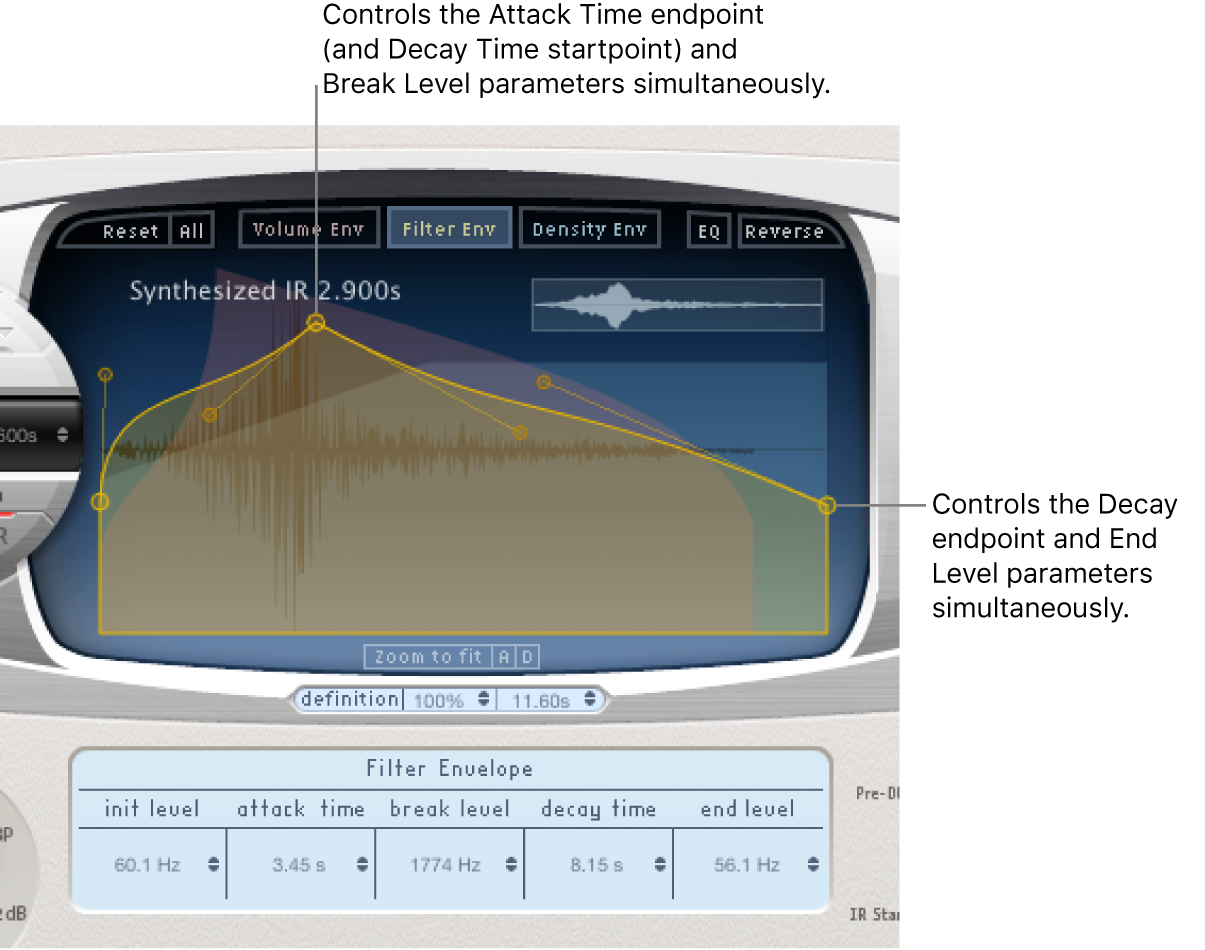Space Designer filter controls in Final Cut Pro
Space Designer’s filter provides control over the timbre of the reverb.
You can select from several filter types and also have envelope control over the filter cutoff, which is independent from the volume envelope. Changes to filter settings result in a recalculation of the impulse response, rather than a straight change to the sound as it plays through the reverb.
For information about adding the Space Designer effect to a clip and showing the effect’s controls, see Add Logic effects to clips in Final Cut Pro.
Main filter controls
The main filter controls are found at the lower-left corner of the interface.

Filter On/Off button: Turn the filter section on or off.
Filter Mode knob: Determine the filter mode.
6 dB (LP): Bright, good general-purpose filter mode. It can be used to retain the top end of most material, while still providing some filtering.
12 dB (LP): Useful where you want a warmer sound, without drastic filter effects. It is handy for smoothing out bright reverbs.
BP: 6 dB per octave design. Reduces the low and high end of the signal, leaving the frequencies around the cutoff frequency intact.
HP: 12 dB per octave/two-pole design. Reduces the level of frequencies that fall below the cutoff frequency.
Reso (Resonance) knob: Emphasize frequencies above, around, or below the cutoff frequency. The impact of the Resonance knob on the sound is highly dependent on the chosen filter mode, with steeper filter modes resulting in more pronounced tonal changes.
Filter envelope controls
The filter envelope is shown in the main display when the Filter Env button is active. It provides control of the filter cutoff frequency over time. All filter envelope parameters can be adjusted either numerically in the parameter bar or graphically in the main display using the techniques discussed in Edit Space Designer envelopes in Final Cut Pro.
Note: Activation of the filter envelope automatically enables the main filter.

Init Level field: Set the initial cutoff frequency of the filter envelope.
Attack Time field: Determine the time required to reach the Break Level (see below).
Break Level field: Set the maximum filter cutoff frequency that the envelope reaches. It also acts as the separation point between the attack and decay phases of the overall filter envelope. In other words, when this level has been reached after the attack phase, the decay phase begins. You can create interesting filter sweeps by setting the Break Level to a value lower than the Init Level.
Decay Time field: Determine the time required (after the Break Level point) to reach the End Level value.
End Level field: Set the cutoff frequency at the end of the filter envelope decay phase.